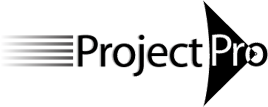Forecast Scheduling - Time Modeling with Project Online - course
For those who are getting started with Microsoft Project 2019 or with Project Online Desktop Client. No prior experience with MS Project is required.
Our courses can be a Live-Online classes, Self-paced classes or In-Person Classes:
- Live, online class: You will attend 4 live session of 3 hours each (12 PDUs). These sessions will be recorded, so you can easily catch up on a missed session.
- Self-paced class: you will review the recordings of a live, online class, have a live Q&A session with an instructor and submit exercise solutions to the instructor (12 PDUs)
- In-Person class: live sessions delivered by an instructor in-person, mostly onsite at larger clients (14 PDUs)
About This Course
We define a ‘Forecast Schedule’ as a ‘valid, dynamic, robust model of the project to forecast it continuously’.
A 'Forecast Schedule - Time Model' is the simplest way of working with MS Project. Time Models provide tangible benefits to your organization:
- Finish date forecasts for each deliverable in your project.
- Continuous forecasts on when the project will end.
Time modeling is also known as ‘duration‑based scheduling’ or ‘project schedules without resources’.
This 2-day course is for new users of Project who want to get started on planning their projects in Project. Overall, the objective of the course is to make participants feel comfortable creating a model of the project that predicts when it will finish (Time Model). The content of the course is restricted to scheduling a single project in Microsoft Project Online.Each Participant Needs to Get
- A Kindle eBook version of the NEW textbook 'Forecast Scheduling with Project Online 2018' available as of Mar 31st, 2020 here. The Kindle eBook costs USD $59 (of which Amazon keeps 70%!) NOTE: Unlike for all our previous courses, as ProjectPro we decided NOT to ship paper books to course participants any longer (because of the environment and COVID-19). You can still buy the paper book from our website if you prefer. If you have the 2018 (green) book already, you don’t need to do anything.
- The free Kindle Reader software for your smartphone, laptop, or desktop computer: available here.
- An electronic certificate with 12 PDUs (live-online and self-paced classes) or 14 PDUs (in-person class) upon completion of the course
- An opportunity to earn the 'Forecast Scheduler – Time Modeling' certificate of competency and earn an additional 20 PDUs (see Certification for more information)
- NEW a free one-year license for our 'Forecast Scheduling App' that performs the checks on best practices in an automated fashion and helps you improve your schedule.
A computer loaded with Project 2019 or Project Online Desktop Client. If you have the 2016, 2013 or 2010 version you can attend the course without problems. If you have Project 2007 or earlier, we recommend you download the free evaluation copy of Project 2019.
Learning Objectives
You will learn how to:
- Navigate the Project interface: the ribbon and views
- Set up a new project in Project
- Enter deliverables (activities and milestones): Create a WBS
- Enter duration estimates
- Enter dependencies between tasks
- Enter deadlines (and some constraints perhaps)
- Optimize the schedule: Critical Path (unlimited resources)
- Use and modify views and reports to report Time forecasts
- Enter and track progress: Updating Tasks
Course Topics
Navigating the Interface
- Ribbons, Quick Access toolbar,
- Different views, single versus combination views
- Gantt Spreadsheet versus timescale
Setting up a new Project
- Enter the project title, manager and start date
- Set up the project calendar
- Set some important options
- Enter the deliverables and insert activities to accomplish them, as well as milestones
- Organize the deliverables and activities in a WBS: create summary tasks and detail tasks
- Insert/delete, cut/copy, indent/outdent detail tasks and summary tasks
Enter Duration Estimates
- Enter Duration estimates (as opposed to Work estimates)
- Differentiate duration from work
- Protect the duration estimate; set task Type to Fixed Duration
Enter Dependencies between Activities
- Enter relationships to make the schedule forecast (and to minimize the effort maintaining the schedule)
- Refine the type of relationship and lag
Enter Deadline dates (promised or agreed upon dates) and perhaps some Constraint dates (fixed dates)
Optimize the Schedule for Time
- Display the Critical Path
- Filter on critical tasks
- Features that can fragment the Critical Path
- How to repair a fragmented Critical Path manually or with an add-in called PathsPro.
- Ways to shorten the complete Critical Path & project schedule (fast-track)
- Difference between Free Slack and Total Slack (float)
- Identify the Total Slack on activities while managing your project to make quick decisions
Modify Views and Reports
- Timeline view
- Select and modify standard reports: a Tasks Burndown report
- Select and modify standard views, tables and filters
- The Timeline report and swim lane report with multiple Timelines
- Report on the complete Critical Path of the schedule
- Typical Time Modeling reports: Deadline Reports, Tasks Burndown, Earned Tasks (a simplified version of Earned Value)
Checking the Quality of the Schedule
- Is the schedule a valid, robust and dynamic model of the project to forecast its finish date continuously?
- Checklist with about 50 checks on the best practices with MS Project for Time Models
- Perform the checks before publishing your schedule and reporting
Update: Enter Progress and Revise Estimates
- Save the first baseline for the entire project
- Maintain the baseline for select tasks
- Set the project status date
- Enter actual and remaining duration on activities
- Put completed tasks in the past (left of status date)
- Put incomplete tasks in the future (right of status date)
- Compare forecast schedule with the project baseline
- View percent complete and other KPIs
